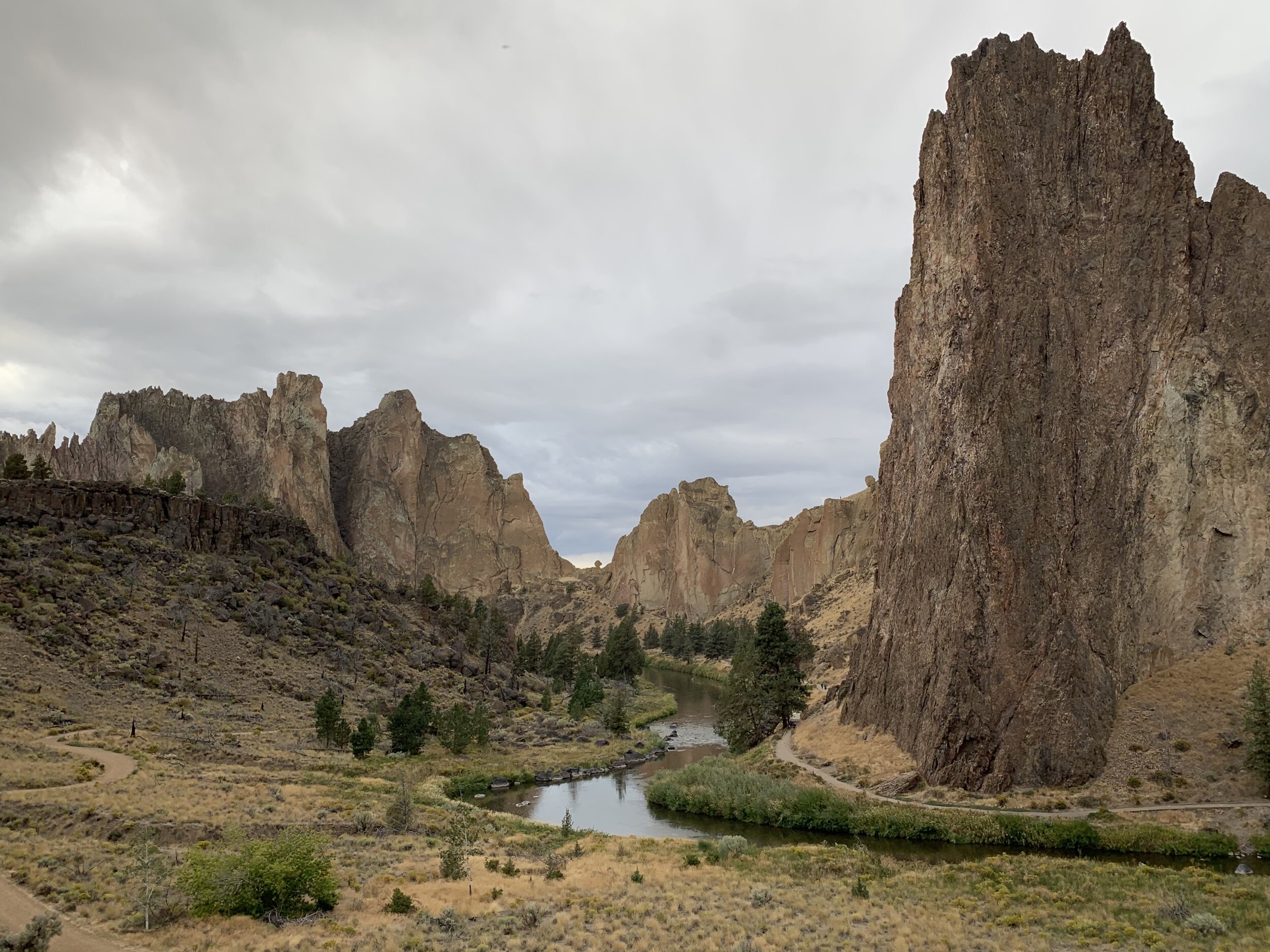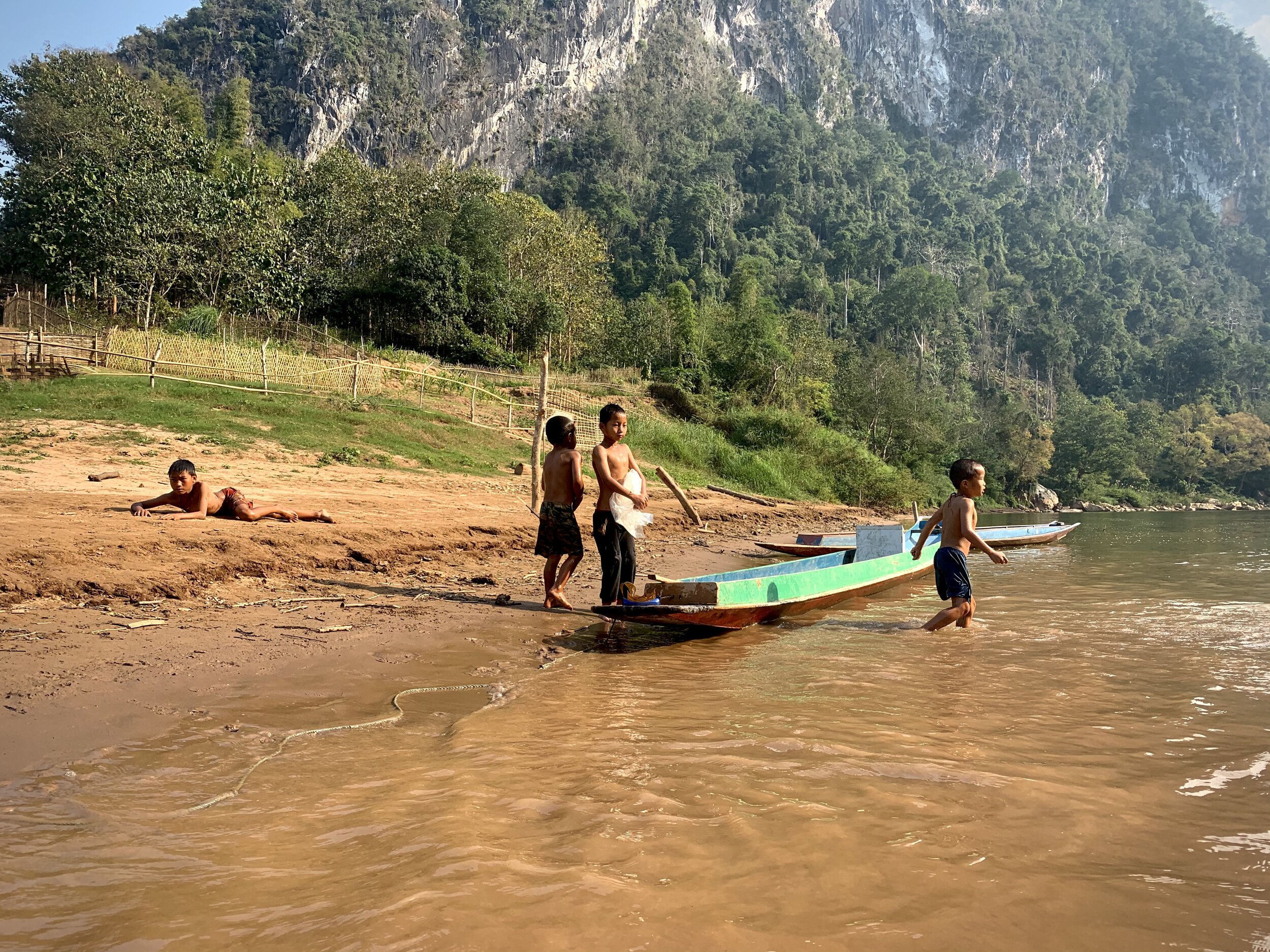Last week, I officially hit my one year anniversary of being on the road. Last June, I hit the road in my Kia Soul with the goal of driving each of the Lower 48 states in one summer, and boy did I accomplish that. I’m now on my second run around the country, moving in the opposite direction. This year has brought a series of ups and downs, transformation, and unexpected plot twists, but more than anything, it’s brought me to some of my favorite places. These are my top 10 favorite spots I’ve been in the past year.
Luang Prabang, Laos
10: Valley of Fire State Park, NV
This one had to make the list because it’s where my journey began, but more than that, it’s one of the prettiest desert landscapes I’ve ever been to. Known for its red rocks, Valley of Fire is famous for its color, its heat, and its history. This state park was formed underwater, and over hundreds of years, became the desert landscape we know today. It’s home to tons of desert wildlife, and beautiful (but sandy) hikes. The whole park can generally be seen in one day, but give it two if you really want the full experience!
Valley of Fire State Park, NV
Want access to my 48 state road trip route? Click the button below to get started!
9: Joshua Tree National Park, CA
Joshua Tree will always hold a special place in my heart because it’s the National Park I’ve been to the most times. Five times to be exact! I truly feel like a local when I visit, and I love showing people around. While it wasn’t part of my 48 state itinerary, it was a place I visited 3 times in 2019, and another in early 2020. Joshua Tree is known for its strange agave “trees” that look like something from Doctor Seuss! It’s a hotspot for Park enthusiasts, climbers, and hikers, or just anyone who wants to experience a scenic drive!
Joshua Tree National Park, CA
8: Acadia National Park, ME
Acadia blew my mind when I first arrived at the park. It was the first place I ever saw both pine trees and the ocean in one place. This was also the furthest from home I drove solo on my 48 state road trip, so it’s got a certain nostalgia to it. Acadia sits on the Atlantic coast, and is home to pine trees, rocky cliffs, a gorgeous beach, and Cadillac Mountain, which is super fun to drive up for sunset! While it isn’t a huge park, it’s definitely one of the most unique ones I’ve ever visited, and was the first place that convinced me to stay longer than I’d originally planned.
Acadia National Park, ME
7: Bend, OR
I never thought I’d put any cities on this list, but Bend stole my heart. Tucked away in the Deschutes National Forest of Central Oregon, Bend is one of the most outdoorsy towns out there. Nearly everyone here does an outdoor sport. And from watching the surfers on the river, to hiking the nearby mountains, to climbing at Smith Rock, there’s an endless amount of outdoor activities to experience here.
Smith Rock State Park in Bend, OR
6: Sedona, AZ
Sedona is another town that totally won me over. It’s basically the desert version of Bend, but spiritual. It’s full of vortexes—large areas of strong spiritual energy—so a lot of people come here to meditate, heal, and get away from it all. Sedona is also known for hiking, red rocks, and history. Between exploring the ancient ruins, hiking Devils Bridge, and simply getting red dust all over the car, there’s something for everyone in Sedona.
Cathedral Rock in Sedona, AZ
5: Redwoods National and State Parks, CA
When I first visited Redwoods last summer, it wasn’t all I thought it would be. But when I spent a week exploring the area last month, it quickly became one of my favorite places ever, and easily my favorite place in California (my home state). Redwoods is, of course, known for its towering Redwood trees—the tallest in the world! But it’s also home to coastlines, stunning wildlife, and every bright green plant you can imagine!
Redwoods National Park, CA
4: Devils Tower National Monument, WY
Devils Tower was a place I wasn’t expecting to visit last year, but it’s a place that I always recommend to people when they want to visit Wyoming. This park is known for the remnants of a dormant volcano that now stands silent over the Eastern Wyoming plains. This park attracts climbers, explorers, and lovers of science fiction (after being used as the set for Close Encounters of the Third Kind), and is home to wildlife such as prairie dogs, which you can meet up close!
Devils Tower National Monument, WY
3: Thailand
Oh yeah, I went to Southeast Asia for the winter! Thailand totally changed the way I see adventure travel. It was the first country to truly introduce me to another culture in depth, and it really opened my eyes to how international travel could and should be. I spent time in remote villages, trekked for free roaming elephants with their Mahouts, and gave back to communities in need. This trip brought me through caves, drove me through rivers, and taught me a new language. While Thailand is easily one of the most popular destinations in Southeast Asia, it’s one where I truly beg you to get off the beaten path and explore some more remote areas instead of sticking to Bangkok and the coastal parts.
Mueang Khong, Thailand
This was so hard not to put as #1, so let’s just say this is my top choice for domestic, US travel. Glacier National Park was truly the most incredible place I went to in the Lower 48, and as I continue to travel here, it remains in that position. Glacier is known for its glaciers, alpine landscape, myriad of wildlife, and scenic drive. It made such an impact, I actually wrote a whole in-depth guide to it, which you can find by clicking the button below.
Grinnell Glacier in Glacier National Park, MT
1: Laos
Laos is truly my favorite place in the world. It was a place I wasn’t expecting to love as much as I do, and a country that blew my mind every turn I took. Here, I spent most of my time volunteering in the weaving village of Sop Chem, but because of that, it was truly the most unique travel experience I’ve ever had. We swam in waterfalls, fed Moon Bears, climbed a mountain, and made connections with the locals, who are some of the kindest people I’ve ever met. Laos is a small country with a rich history, and it’s definitely underrated when it comes to Southeast Asia travel.
Learn more about Laos by clicking the button below!
Nam Ou River, Laos
The past year of travel has truly changed my life. I’ve explored so much, and I can’t wait to share these places with those I love, and continue to add more places to the list (although it’ll be hard to take some of these off as I grow my been-there list!).
Want help planning a trip to any of these places? Consider me your travel expert! Click the button below to get started!
Honorable mentions:
Bryce Canyon National Park, UT
Bryce Canyon National Park
Alabama Hills, CA
Alabama Hills
Mono Lake, CA
Mono Lake
Great Smoky Mountains National Park, TN/NC
Great Smoky Mountains National Park
Craters of the Moon National Monument, ID
Craters of the Moon
Mount Hood National Forest, OR
Mount Hood
















































